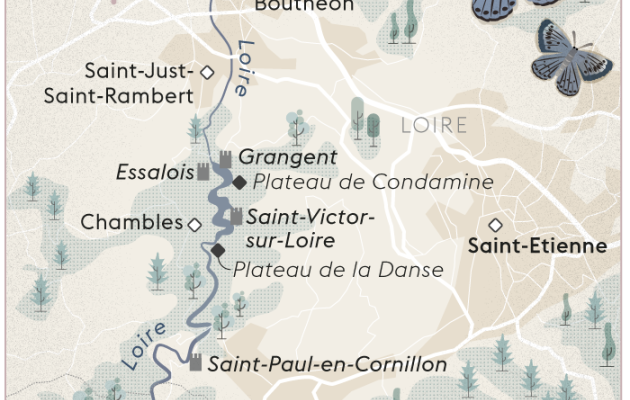It’s the story of a butterfly that hypnotizes a red ant. The blue thyme, with wings tinged with sky blue and beige, lays its eggs on the aromatic plant near a colony of ants. The caterpillar feeds on the flower then falls to the ground secreting a sweet honeydew to attract the Myrmica who, deceived by the emission of pheromones, takes her for one of her larvae and carries her to the anthill. For weeks, she finds food and shelter there by devouring the eggs of her guests. Then the chrysalis seduces the ants who lick it in order to avoid mold until the butterfly flies away for a few weeks of life, between June and August.
Richard Bio, in charge of sustainable tourism for the regional nature reserve of the gorges of the Loire, likes to tell this stratagem on which depends the survival of this threatened butterfly in Europe but which flourishes on this territory. And on that day, on the windswept moorland of the Condamine plateau above the river far below, the idea that a barely visible microcosm contained such a wild epic fits well with the particular universe of these throats. Twenty-four kilometers long following the river from Aurec-sur-Loire to Saint-Just-Saint-Rambert, barely 15 kilometers as the crow flies, very close to Saint-Etienne behind the hills, but a world in itself and something grandiose between meanders and eagle’s nests.
Certainly, other gorges of the Loire, upstream towards the sources of Mont Gerbier-de-Jonc or downstream near Roanne, are beautiful landscapes. But it is here that they have a particular character, when they enclose the river between the steep granite flanks. From Condamine, when the sky is gray and the river the color of bronze behind the rocks covered with peaty-scented broom, the impression is almost of Scotland, especially if a ray of sunshine pierces up to the tower of the Château de Grangent. on its island and gives the air of Loch Ness.
On a clear day, at the end of a logging road that leads to the edge of the Dance Plateau, the loops of the river between hills of pines and oaks are more like a miniature version of the White River in the Ozarks of Arkansas. However, this powerful panorama is artificial, born from the dam of Grangent, which, since 1957, closes the Loire a little further and drowned the narrow valley. On this side of the work, it meanders, wide and deep with the fifty million cubic meters retained. On the other, it becomes a bubbling river again and only calms down after Andrézieux-Bouthéon.
You have 65.4% of this article left to read. The following is for subscribers only.
